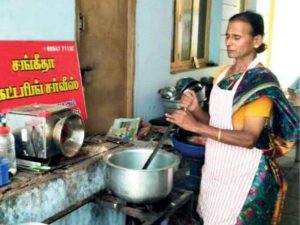अमितेश कुमार, एक साधारण सा नाम, ना पहचान, ना कोई रूतबा, ना कोई शख्सियत। अमितेश ने पढ़ाई के दौरान सीएसआर (CSR) को जाना और उसकी ताकत को पहचाना। फिर क्या था, सीएसआर यानी कॉर्पोरेट सोशल रिस्पांसिबिलिटी की मदद से अमितेश ने वो कारनामा कर दिखाया जिससे आज ना सिर्फ जिलाधिकारी, मुख्यमंत्री बल्कि देश का सबसे ताक़तवर दफ्तर प्राइम मिनिस्टर्स ऑफिस (PMO) भी अमितेश के सामाजिक काम को सराह रहा है। अमितेश ने Corporate Social Responsibility (सीएसआर) की मदद से अपने गांव का कायापलट ही कर दिया है।
सीएसआर की मदद से स्मार्ट विलेज बना दैहर गांव, पीएमओ ने की तारीफ
झारखंड हजारीबाग के चौपारण प्रखंड स्थित दैहर गांव के पेशे से इंजीनियर अमितेश ने जो काम किया है, उसकी वजह से उनकी चर्चा प्रधानमंत्री नरेंद्र मोदी भी कर रहें हैं। शायद बहुत जल्द हम मन की बात में उनके बारे में सुन सकेंगे। अब आप ये जानने के लिए उत्सुक जरूर होंगें कि आखिर इस व्यक्ति ने ऐसा क्या कर दिया, जिसकी वजह से प्रधानमंत्री भी उनकी चर्चा कर रहें हैं? दरअसल किसी एक व्यक्ति की इच्छाशक्ति से भी किसी जगह की तस्वीर कैसे बदल सकती है, यह अमितेश कर दिखाया है। वो भी सीएसआर की मदद से।
लॉकडाउन में आये थे अपने गांव, सीएसआर से परेशानी को अवसर में बदला
कोरोना के दौरान अमितेश मुंबई से हजारीबाग स्थित अपने गांव आये हुए थे। लॉकडाउन की वजह से दो-तीन महीने तक गांव में ही रहना पड़ा। उसके बाद अमितेश ने जो जूझा उससे अमितेश ने ठान ली कि अब गांव के लिए कुछ करना है। गांव के लोग पानी की समस्या से जूझ रहे थे। कुएं से पानी मिलता था। गांव के लिए पक्की सड़क नहीं थी। इसी तरह गांव वालों ने अमितेश को और कई तरह की समस्याओं की जानकारी दी। फिर क्या था अमितेश को लगा कि इन सब समस्याओं को सीएसआर फंड से सुलझाया जा सकता है।
सीएसआर से मदद कर कई कंपनियां दे रहीं अमितेश के गांव का साथ
अमितेश ने अपने गांव को स्मार्ट विलेज बनाने के लिए विकास का खाका खींचकर अपनी कंपनी ओएनजीसी को भेजा तो कंपनी सीएसआर के तहत गांव के विकास के लिए तैयार हो गई। इसके बाद कई और कंपनियों का सहयोग लेकर अमितेश ने योजना को और भी विस्तार दिया। गांव के कायाकल्प और ग्रीनफील्ड स्मार्ट गांव का उसका सपना अब जल्द ही साकार होने वाला है। अमितेश की मदद के लिए ओएनजीसी, टाटा, रिलायंस इंडस्ट्री टेलीकॉम सेक्टर से भी प्रस्ताव मिला है। ये भी चर्चा है कि गांव में बेरोजगारी भी एक समस्या है जिसके लिए कंपनीज यहां निवेश के लिए तैयार दिख रही हैं।
पिछड़ा है अमितेश का दैहर गांव
अमितेश का गांव दैहर पिछड़ा गांव है। दैहर हजारीबाग के चौपारण प्रखंड में पड़ता है। हजारीबाग शहर से करीब 55 किलोमीटर दूर है गांव। गांव की आबादी करीब पांच हजार है और गांव तक तो सड़क बनी है, लेकिन जर्जर है। 50 फीसदी लोगों के पास पीने के पानी के लिए अपने स्रोत कुआं या चापानल नहीं है, वे पानी के लिए इधर-उधर भटकते थे। पर अब यह गांव हरित स्मार्ट गांव में तब्दील होनेवाला है। यहां पर पक्की सड़कें होंगी। गांव में 50 पक्के मकान बननेवाले हैं। पेयजल की व्यवस्था हो चुकी है। स्ट्रीट लाइट लगनेवाले हैं। इसके अलावा अस्पताल भी बनेगा और पौधारोपण भी किया जाना है। ग्रामीणों में खुशी का माहौल है। और ये सब संभव हुआ अमितेश की जूनून और सीएसआर की वजह से।

 Sangeeta was an entrepreneur who was also making her own community more employable. Sangeeta had started Covai Trans-Kitchen where 12 transgender persons and others were employed. Loved and respected by activists in Tamil Nadu as a humanitarian, she also ran the NGO Coimbatore Transgender Welfare Trust.
Sangeeta was an entrepreneur who was also making her own community more employable. Sangeeta had started Covai Trans-Kitchen where 12 transgender persons and others were employed. Loved and respected by activists in Tamil Nadu as a humanitarian, she also ran the NGO Coimbatore Transgender Welfare Trust.